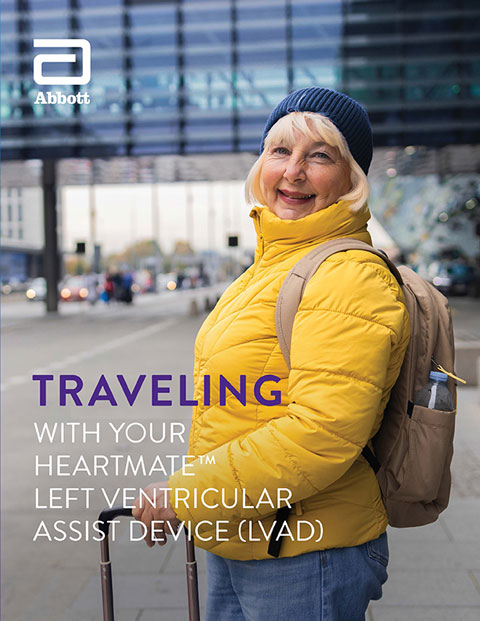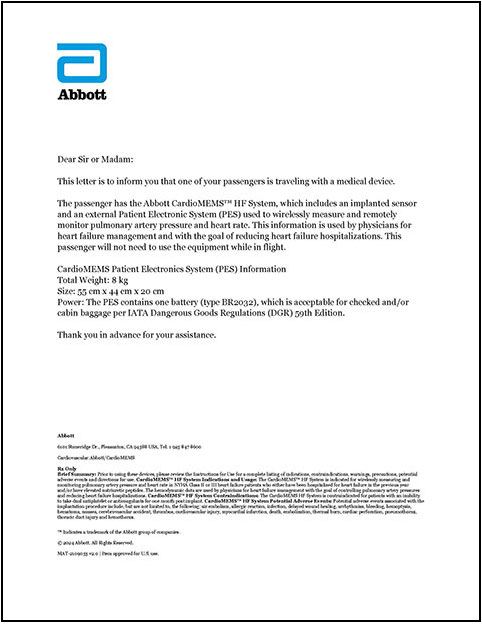It’s important to notify your care team about your plans, so they can:
Traveling by plane? Rest easy. Air travel, including passing through airports, is safe. It’s also simple, if you know what to look for.
When you go through security checkpoints, full body scanners that utilize millimeter technology may be preferable, if available, for your device.
If your physician has directed you otherwise, or you are uncomfortable using the metal detectors or scanners, request a full-body pat down as an alternative security screening.
Move through metal detectors at a normal walking speed. Don’t pause for more than a few seconds.
If your device sets off the detector, tell security personnel about it and present your ID.
If security personnel use a handheld wand for scanning, ask them to move it over your device or PA sensor area quickly.

Learn more about traveling safety with your HeartMate LVAD including how metal detectors and body scanners can interfere with your pump.

Bring this travel letter with you when you fly.
On your flight, stay hydrated and move around as much as possible. When you’re sitting, do simple ankle rotations and leg movements to keep the blood circulating in your body.
If you’re traveling by car or RV, consider the following recommendations:
Avoid riding in the front seat of cars with airbags. (The impact force during an accident could cause serious damage or bleeding.)
Your doctor will tell you whether it’s safe for you to drive an automobile when you have a pump. Usually, you need to wait at least 6-8 weeks after surgery before your doctor will approve you to drive. Some states have laws against letting people with a history of fainting, dizziness or cardiac arrest behind the wheel.
Cruise ships often have a doctor and medical services on board. Before booking your trip:

MAT-2101896 v3.0
Stay Connected